Facts
- Manufacturer: Commodore
- Type: Home computer
- Released: March 1992
- Discontinued: 1993
- OS: AmigaOS 2.05 (up to 3.1 with ROM chip replacement)
- CPU: Motorola 68000 @ 7.16 MHz (NTSC) 7.09 MHz (PAL)
- Memory: 1 MB (Max 6 MB, more with unofficial expansions)
- Predecessor: Amiga 500 Plus
- Successor: Amiga 1200
- ROM: 512 KB Kickstart 2.0
- Chipset: ECS (Enhanced Chip Set)
- Palette: 4096 colors (4096 on-screen colors in “HAM” mode)
- Screenmodes: 1504×576i 2-bpp PAL, 368×567i 6 bpp PAL
- Built-in media: 3.5″ floppy drive (880 KB)
- Internal storage: 20 or 40 MB 2.5″ IDE/ATA hard drive (A600HD)
- Internal expansion: 80-pin slot for 1 MB RAM and RTC
- I/O ports: 2× Mouse/joystick ports, RS-232, Centronics, Floppy drive, 44-pin IDE/ATA controller (internal), PCMCIA slot
- Audio: 4× 8-bit PCM channels stereo
Released 1992: The Amiga 600, also known as the A600 (codenamed “June Bug” after a B-52s song), is a home computer that was introduced at the CeBIT show in March 1992. The A600 is Commodore International’s final model based on the ECS chipset. It is essentially a redesign of the Amiga 500 Plus, with the option of an internal hard disk. A notable aspect of the A600 is its small size and lacking a numeric keypad.
Like the A500 and A500+, the A600 was aimed at the lower end of the market, with the higher end being dominated by the Amiga 3000. It was intended by Commodore to revitalize sales of the A500-related line before the introduction of the 32-bit Amiga 1200. According to Dave Haynie, the A600 “was supposed to be 50–60 US$ cheaper than the A500, but it came in at about that much more expensive than the A500.” This is supported by the fact that the A600 was originally to have been numbered the A300, positioning it as a lower-budget version of the A500+. In the event, the cost led the machine to be marketed as a replacement for the A500+, requiring a change of number. Early models feature motherboards and power supplies with the A300 designation.
Amiga 600 has been disliked by some Amiga enthusiasts. The absence of the Zorro II type “sidecar” expansion slot of the Amiga 500 and Amiga 500+, making it more limited if you want to expand it into a really high-end Amiga. It’s also lacking the numeric keypad due to its small size.
Personally, I’ve always liked the Amiga 600. It came with an internal IDE (ATA) harddrive controller and optional hard drive. For my Amiga 500 back then, I payed a small fortune (700 USD) to get a “sidecard” 52 MB SCSI harddrive (GVP Impact Series).
The A600 is the first Amiga model that was manufactured in the UK. The factory was in Irvine, Scotland, although some later examples were manufactured in Hong Kong. It was also manufactured in the Philippines. The first-ever production A600—serial number “1”—resided in the Commodore UK managing director’s office.
Amiga 600 got an internal “trapdoor” expansion slot where you can add 1 MB RAM (Chip RAM) and a RTC (realtime clock). It also got PCMCIA slot where you can add up to 4 MB Fast RAM (CPU RAM), network card, CD ROM and other general PC Laptop equipment, today these upgrades has become really cheap compared to back then.
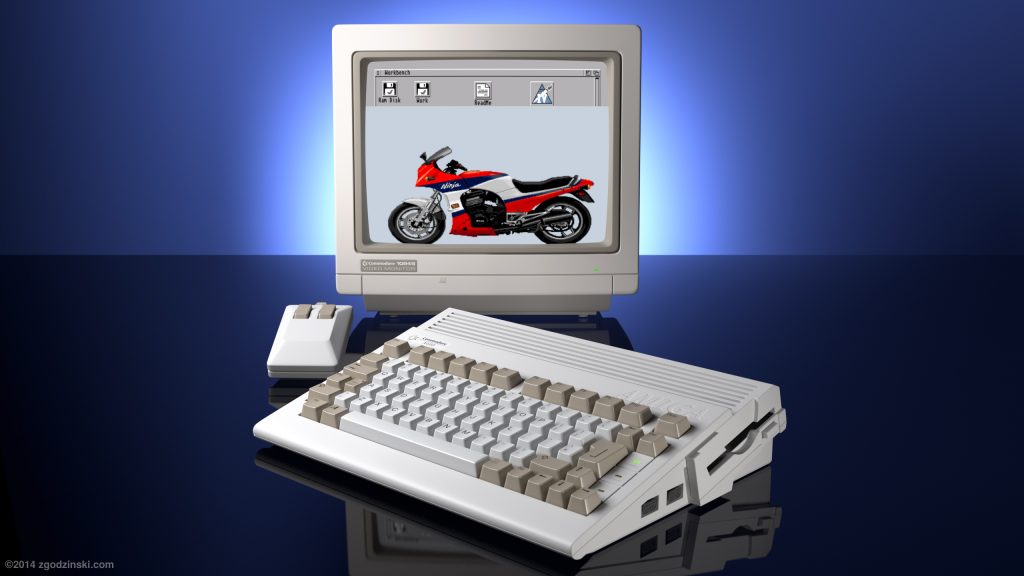
My Amiga 600, repairs and upgrades
My A600 was failing after being turned on for around ten minutes. I suspected bad capacitors, this is a common problem on the A600 more than other Amiga models. I brought it to (retroservice.no), and got all the electrolytic capacitors replaced “a recap” and the main board was at the same time checked in a digital microscope for electrolyte leakages from the capacitors. This machine uses SMD (Surface Mount Devices) capacitors and these are known to leak and make problems with age. After replacing the capacitors, my A600 worked stable and fine again.
CF memory card as hard drive
I use an Compact Flash card adapter for the internal IDE (ATA) connector and a 32 GB CF memory card for hard drive. A Compact Flash memory card is reliable, quiet and draws little current. I struggled a little bit setting it up, using more than the first 4 GB requires some patching to the driver for the controller and a “newer” file system. 4 GB hard drive size is a limit in the original Amiga OS 3.1 as being a 32 bit OS.
Now it all works fine. I got Cloanto’s Kickstart 3.1x ROM replacement for the machine as well, I also purchased a very affordable homemade 1 MB (Chip RAM) expansion for the internal trap-door expansion.
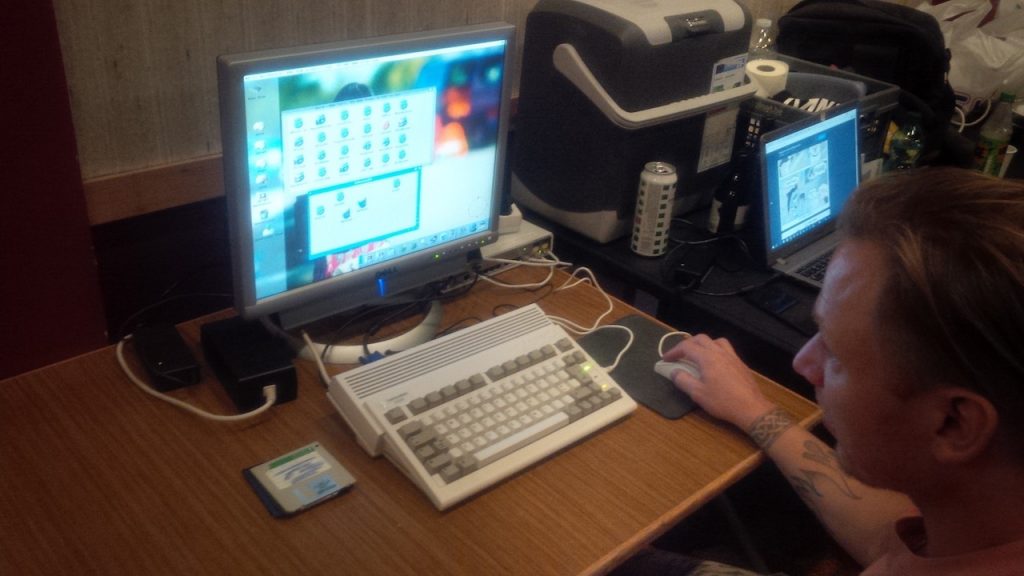
Vampire 2 FPGA accelerator
After many months of waiting, I finally got the amazing “Vampire 2” FPGA accelerator. It makes the CPU around 200 times faster than original and gives the Amiga 600 an RTG P96 compatible graphic card with HDMI output and 128 MB of additional Fast RAM. This accelerator is the most powerful upgrade for the classic Amiga ever. Now, my Amiga 600 really feels like the Amiga 4000T/060@75 I’ve regret selling in the late 90’s.
- 31.o3.2018 – Vampire 2 stable with newer cores: Soldered 2 x 100 uF capacitors onto the Vampire 2 card. This made the card stable when running Gold Core 2.7, even at 12x speed. Without this modification, the Amiga 600 wouldn’t even boot with this core update.
- 31.o3.2018: Backup clock “RTC”: Repaired a non-working 1 MB Chip RAM expansion for the trapdoor. This one also got RTC (real time clock) so I get the file date stamps correct. Added a coin cell battery holder on the backside of the card, due to space.
- 31.o3.2018 – Securing the Vampire 2 mount: Secured the Vampire with 1.6 mm screws and nuts
- 31.o3.2018 – Internal HDMI: Mounted HDMI connector internally. Removed the built in RF-modulator on the mainboard and attached the HDMI connector for the Vampire 2 RTG graphic output, using strips.
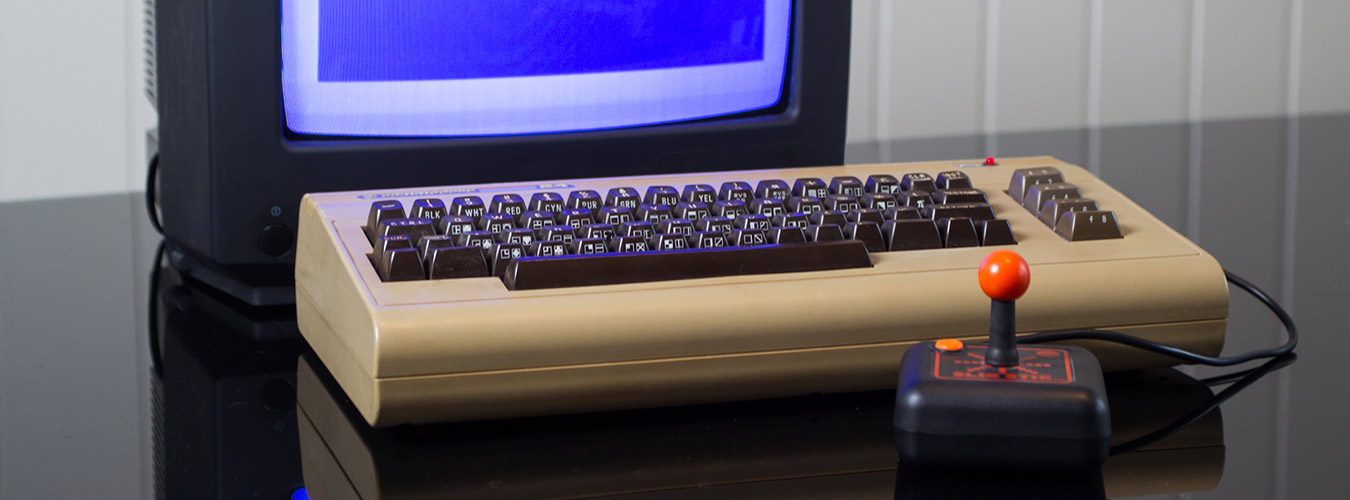
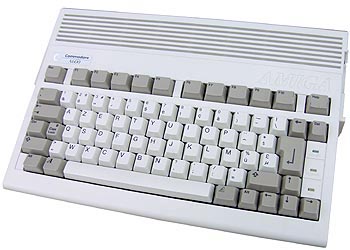
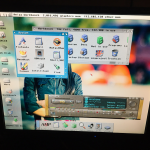


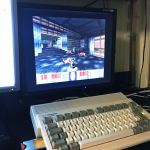
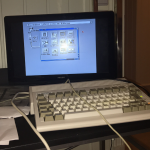
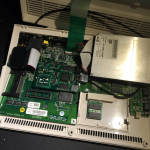
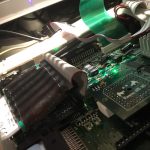
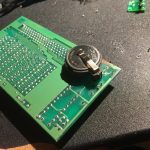
Great article Remi.
I’m with my Miggy 600 now with Furia 020/40, but really want the Vampire to play around with those RTG games and desktops. I’ve no idea how long I need to wait to hit the top of the list as I’ve not registered long ago and the Covid ‘thing’ has slowed production down to a crawl, or so I understand. Here’s hoping.
Next I’m looking for a proper restoration job on an A1200 to relive those days – my favourite computer of all time when I had it in my DIY tower. Happy days 🙂
Thanks a lot for compliment. Look around at Amibay as well, Vampire2 pops up from time to time. Remember, both the A600 and A1200 needs new capacitors and to be cleaned from leakage, even if they are working. The cap leakage damage the traces and stuff.